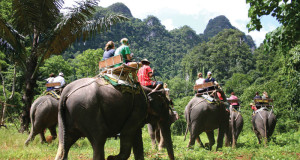Review Overview
Original and viable
Hypothesis facts supported
Trends based in evidence
With the worldwide increase in fiscal awareness and scrutiny of health care, budgets, and economies, the emphasis on disease prevention has proportionately increased, not only as stability enhancer but also a cost saver. As an important tool in prevention, the global health community is realigning to improve infectious disease surveillance. We examine why this is important to humanitarian and disaster relief missions. With much human infection being of zoonotic origin, expected increases in human/animal contact threaten to not only widen zoonotic thresholds but increase the numbers of infective agents (xenozoonotics). Researchers, relief groups and many other development-partner relationships are evolving; these consortiums naturally integrate tightly, even culturally, with local communities, sharing their food and water sources, living space, habits and traditions, and ultimately their infections during relief efforts. The cascading effects of increased food production for industrialized and commercial purposes affects cultures and the ecosystem in ways which are still unknown. These stressors are estimated to increase exposures while under-resourced developing countries struggle to participate in commodity markets, amassing livestock with under-developed veterinary or medical oversight. Disease control challenges are multiplied under the stressors of natural and/or man-made disasters. While the architecture of surveillance, reporting, response and control methods lean toward modern adaptations, extension from high-capacity diagnostics and modeling to the education of local inhabitants in developing nations requires a variety of approaches for effective integration. The requirements for collaboration on monitoring disease signs and symptoms, investing in vaccination and prevention, identifying and interdicting transmission routes of disease, etc., are considerable. The multi-factorial stressors that increase disease threats in troubled lands will be discussed in their wide base of implications to outline the non-prejudicial nature of evolving infectious diseases, and their implications to relief efforts. When integrating with host-nation populations whose environment or political situation is affected, weakly regulated, industrialized agricultural settings are showing new challenges, separate from a robust healthcare infrastructure while increasingly threatening the immuno-naiive.
 Vitamin Agent The Health & Naturalistic Source
Vitamin Agent The Health & Naturalistic Source





